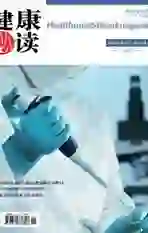成骨细胞在骨性关节中发挥的作用
2020-05-29万云鹏
万云鹏
【摘 要】现在普遍认为骨性关节炎(osteoarthritis,OA)的发病不是单一的因素,而是一个整体的过程,涉及所有受到影响的关节结构,最终导致关节软骨的退化。其中关节软骨的退变以及软骨下骨的骨重塑和硬化是骨性关节炎发病最为关键的因素。软骨下骨的异常重塑以及硬化会引发其自身的应力改变,随之影响覆盖其表面的关节软骨的稳定,使其发生病变。成骨细胞在软骨下骨的重塑以及硬化中发挥了及其重要的功能。故研究成骨细胞对于骨性关节炎具有重要的意义。
Abstract It is now widely accepted that the onset of osteoarthritis (OA) is not a single factor, but a holistic process involving all affected joint structures that ultimately lead to the degradation of articular cartilage. Degeneration of articular cartilage and bone remodeling and sclerosis of subchondral bone are the most critical factors in the pathogenesis of osteoarthritis. Abnormal remodeling of the subchondral bone and hardening cause its own stress changes, which in turn affect the stability of the articular cartilage covering its surface, causing it to develop lesions. Osteoblasts play an important role in the remodeling and hardening of subchondral bone. Therefore, the study of osteoblasts has important implications for osteoarthritis.
軟骨下骨的病变对骨性关节炎的影响
骨性关节炎是一种退行性的关节病变,通常表现为关节软骨病变,非正常的软骨下骨骨重塑以及硬化,骨赘的形成以及滑膜组织的无菌性炎症[1]。尽管我们已经认识到很多因素和骨性关节炎的发生发展有明显的联系,比如年龄,肥胖,关节创伤,生物力学的改变和发育型疾病等,但骨性关节炎明确的发病机理仍旧不明[2]。以前的研究中,往往把关节软骨的退变及损害作为研究的重点所在,其中对软骨细胞的相关研究尤为重视,因为软骨细胞的退化以及表型的改变将会导致其分泌软骨外基质的变化,从而最终影响关节软骨的变化[3, 4],但现在的研究证明骨性关节炎的发生和发展是一个整体的过程,特别是软骨下骨的异常骨重塑和软骨下骨的硬化,矿化的下降尤为重要[5]。更为重要的是软骨下骨的病变会直接影响覆盖其表面的关节软骨,加重骨性关节炎中软骨的退化,目前越来越多的研究开始关注软骨下骨,而对软骨下骨的病变起到最主要作用的是成骨细胞的过度分化以及异常表型的表达,这些因素直接导致软骨下骨的骨重塑增多并且引起其硬化以及矿化能力的下降[6-8]。所以研究骨性关节炎软骨下骨中成骨细胞的作用就显得尤为重要。
成骨细胞在骨性关节炎中软骨下骨的作用
从动物骨性关节炎模型以及取自人关节置换手术中的软骨下骨的标本中获得的证据表明,骨性关节炎的软骨下骨的骨重建发生了明显改变,骨重建是通过破骨细胞和成骨细胞的不断的作用实现的。骨性关节炎关节的机械应激力似乎与其软骨下骨的微损伤和微骨折的增加相对应[9-11]。而有研究认为,骨的微损伤是由于能量吸收增强而保护关节软骨[10],它还能促进骨骼重塑。骨细胞检测矿化骨基质的损伤,并通过启动受损骨的定向破骨吸收来指导其修复[12]。正如之前研究的那样,骨重建的速率会随着疾病的不同而改变。因此,早期OA患者软骨下骨发生骨重塑增加,并伴有血管增多,而晚期疾病的特点是骨量减少,无骨形成。骨重建的改变在关节内也有不同的空间变化,例如在膝关节的内侧和外侧,但也影响关节的更远处的部位[13, 14]。骨重塑改变导致骨结构改变,松质骨骨体积分数增加,骨赘形成[13, 15]。
骨小梁数目增加,骨小梁间距减小,骨性关节炎骨硬度降低,是由于软骨下骨中矿化的降低,这些软骨下骨的变化会导致覆盖其表面的关节软骨的退化[16, 17]。起源于骨性关节炎软骨下骨中的成骨细胞的表型的基因的表达较正常的成骨细胞有所改变,比如在骨性关节炎软骨下骨中的成骨细胞所表达碱性磷酸酶,骨钙素的水平较正常的成骨细胞均大幅度提高[6]。此外,与对照组的正常成骨细胞相比,骨性关节炎的成骨细胞矿化紊乱,矿化程度降低,COL1A1:COL1A2 的比值较正常成骨细胞升高也大幅度提高[6]。同时骨性关节炎的成骨细胞比正常的成骨细胞产生更多的TGFβ1,如果抑制TGFβ1,骨性关节炎成骨细胞异常分化被纠正[18]。在体外培养骨性关节炎中的成骨细胞时,该细胞的TWIST1,TGFβ1和SMAD3 mRNA的表达失调,和先前在骨性关节炎软骨下骨中观察到情况类似,表明了至少一部分的骨性关节炎的病因是由于内在成骨细胞特性的改变所致[19]。最近的一份报告证实了人和小鼠骨性关节炎软骨下骨中TGFβ1被高浓度表达,软骨下骨中过量的TGFβ1的表达实际上诱导了骨性关节炎的发生[20]。
结论
骨性关节炎会导致软骨下骨中成骨细胞的表型发生改变,这些成骨细胞的改变会引起软骨下骨和其表面覆盖的软骨的病变,最终加重病程的发展。
参考文献
Chen D, Shen J, Zhao W, Wang T, Han L, Hamilton JL, Im HJ: Osteoarthritis: toward a comprehensive understanding of pathological mechanism. Bone Res 2017, 5:16044.
Goldring MB, Otero M, Tsuchimochi K, Ijiri K, Li Y: Defining the roles of inflammatory and anabolic cytokines in cartilage metabolism. Ann Rheum Dis 2008, 67 Suppl 3:iii75-82.
Eyre D: Collagen of articular cartilage. Arthritis Res 2002, 4(1):30-35.
Roughley PJ: Articular cartilage and changes in arthritis: noncollagenous proteins and proteoglycans in the extracellular matrix of cartilage. Arthritis Res 2001, 3(6):342-347.
Ding M, Danielsen CC, Hvid I: The effects of bone remodeling inhibition by alendronate on three-dimensional microarchitecture of subchondral bone tissues in guinea pig primary osteoarthrosis. Calcif Tissue Int 2008, 82(1):77-86.
Couchourel D, Aubry I, Delalandre A, Lavigne M, Martel-Pelletier J, Pelletier JP, Lajeunesse D: Altered mineralization of human osteoarthritic osteoblasts is attributable to abnormal type I collagen production. Arthritis Rheum 2009, 60(5):1438-1450.
Hilal G, Martel-Pelletier J, Pelletier JP, Ranger P, Lajeunesse D: Osteoblast-like cells from human subchondral osteoarthritic bone demonstrate an altered phenotype in vitro: possible role in subchondral bone sclerosis. Arthritis Rheum 1998, 41(5):891-899.
Massicotte F, Aubry I, Martel-Pelletier J, Pelletier JP, Fernandes J, Lajeunesse D: Abnormal insulin-like growth factor 1 signaling in human osteoarthritic subchondral bone osteoblasts. Arthritis Res Ther 2006, 8(6):R177.
Li ZC, Dai LY, Jiang LS, Qiu S: Difference in subchondral cancellous bone between postmenopausal women with hip osteoarthritis and osteoporotic fracture: implication for fatigue microdamage, bone microarchitecture, and biomechanical properties. Arthritis Rheum 2012, 64(12):3955-3962.
Malekipour F, Whitton C, Oetomo D, Lee PV: Shock absorbing ability of articular cartilage and subchondral bone under impact compression. J Mech Behav Biomed Mater 2013, 26:127-135.
Fazzalari NL, Kuliwaba JS, Forwood MR: Cancellous bone microdamage in the proximal femur: influence of age and osteoarthritis on damage morphology and regional distribution. Bone 2002, 31(6):697-702.
Mori S, Burr DB: Increased intracortical remodeling following fatigue damage. Bone 1993, 14(2):103-109.
Fazzalari NL, Parkinson IH: Femoral trabecular bone of osteoarthritic and normal subjects in an age and sex matched group. Osteoarthritis Cartilage 1998, 6(6):377-382.
Kumarasinghe DD, Hopwood B, Kuliwaba JS, Atkins GJ, Fazzalari NL: An update on primary hip osteoarthritis including altered Wnt and TGF-beta associated gene expression from the bony component of the disease. Rheumatology (Oxford) 2011, 50(12):2166-2175.
Jeffery AK: Osteophytes and the osteoarthritic femoral head. J Bone Joint Surg Br 1975, 57(3):314-324.
DallAra E, Ohman C, Baleani M, Viceconti M: Reduced tissue hardness of trabecular bone is associated with severe osteoarthritis. J Biomech 2011, 44(8):1593-1598.
Li B, Aspden RM: Material properties of bone from the femoral neck and calcar femorale of patients with osteoporosis or osteoarthritis. Osteoporos Int 1997, 7(5):450-456.
Truong LH, Kuliwaba JS, Tsangari H, Fazzalari NL: Differential gene expression of bone anabolic factors and trabecular bone architectural changes in the proximal femoral shaft of primary hip osteoarthritis patients. Arthritis Res Ther 2006, 8(6):R188.
Kumarasinghe DD, Sullivan T, Kuliwaba JS, Fazzalari NL, Atkins GJ: Evidence for the dysregulated expression of TWIST1, TGFbeta1 and SMAD3 in differentiating osteoblasts from primary hip osteoarthritis patients. Osteoarthritis Cartilage 2012, 20(11):1357-1366.
Zhen G, Wen C, Jia X, Li Y, Crane JL, Mears SC, Askin FB, Frassica FJ, Chang W, Yao J et al: Inhibition of TGF-beta signaling in mesenchymal stem cells of subchondral bone attenuates osteoarthritis. Nat Med 2013, 19(6):704-712.
